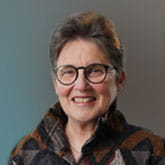A 2020 President’s Message by Dr. Douglas DeLong struck a reassuring, optimistic note regarding the future of general internal medicine, a primary care specialty that has struggled in the last decade with decreasing numbers of residents choosing to join its ranks. Data shows that since 2011, the percentage of U.S.-trained physicians who have matched into primary care positions has been on the decline.
Many factors are responsible for this decline. One of the main factors has been the gap between the compensation for the cognitive specialties like general internal medicine and the procedural specialties. From 2008 to 2017, specialist compensation increased by a weighted mean (SD) of 0.6% (1.2%) per year, from $378,600 to $399,300, whereas primary care compensation increased by 1.6% (2.2%) per year, from $214,100 to $247,300. The specialist “premium” declined during this period, from $164,500 in 2008 to $152,000 in 2017, or from 77% to 61%. Even with this decrease, the gap remains substantial and impactful considering the fact that the average U.S.-trained physician, regardless of their chosen specialty, ultimately pays $365,000–$440,000 for their educational loans.
The High Cost of Administrative Tasks
The increasing administrative burden that has plagued physicians across the U.S. health system has disproportionately affected primary care physicians who reportedly spend upwards of 17% of their time attending to required administrative tasks. This has been another important factor in driving young trainees away from primary care specialties. These burdens have impacted primary care specialties including general internal medicine more because of the reliance on electronic health record (EHR) workflows which are heavily impacted by regulatory requirements. At the beginning of the opioid epidemic, there was also a heavy burden on primary care physicians to shoulder the identification and treatment of patients with opioid use disorders with little training and preparation.
An Optimistic Note
Despite these negative forces, Dr. DeLong is striking an optimistic note about the future of general internal medicine. His optimism is based on several recent trends, among them the significant increase in the reimbursement for evaluation and management codes that internists use most frequently, the 2021 changes to the billing rules allowing primary care physicians to count and bill for the total time on the date of the encounter that may or may not include counseling and care coordination. Eligible time includes both the face-to-face and non-face-to-face time that the physician personally spends before, during and after the visit on that same day. Centers for Medicare & Medicaid Services (CMS) has overhauled and improved how quality is measured, eliminating dozens of redundant and outdated quality measures, with projected savings of $128 million and an anticipated reduction of 3.3 million burden hours through 2020. According to CMS, the Patients Over Paperwork initiative is projected to save the medical community $6.6 billion and 42 million burden hours through 2021. CMS has also created an Office of Burden Reduction, tasked with embedding this culture throughout CMS and across all its programs.
Dr. DeLong calls on general internists to embrace team-based care where general internists lead teams of healthcare professionals all operating at the “top of their license” in support of true team-based, patient-centered care. He calls on general internists to “claw back” those areas of practice that were jettisoned by the specialty as its members struggled. He’s referring to the care of patients with diabetes and congestive heart failure, HIV and chronic kidney disease who over the last decade or so have all been referred to specialist care. Dr. DeLong says it best at the end of his President’s message: “By paying internists commensurate with their value, by unshackling internists from data entry, by allowing internists to devote their attention to the more complex of our patients, and by developing and honing our superpowers, we can ultimately get back to the future, and reassume the mantle of the ‘doctor's doctor.’” We couldn’t agree more.
Subscribe to the NextGen® Advisors blog to keep updated with the latest news and issues impacting the healthcare community.
Meet NextGen Ambient Assist, your new AI ally that generates a structured SOAP note in seconds from listening to the natural patient/provider conversation.
Read Now